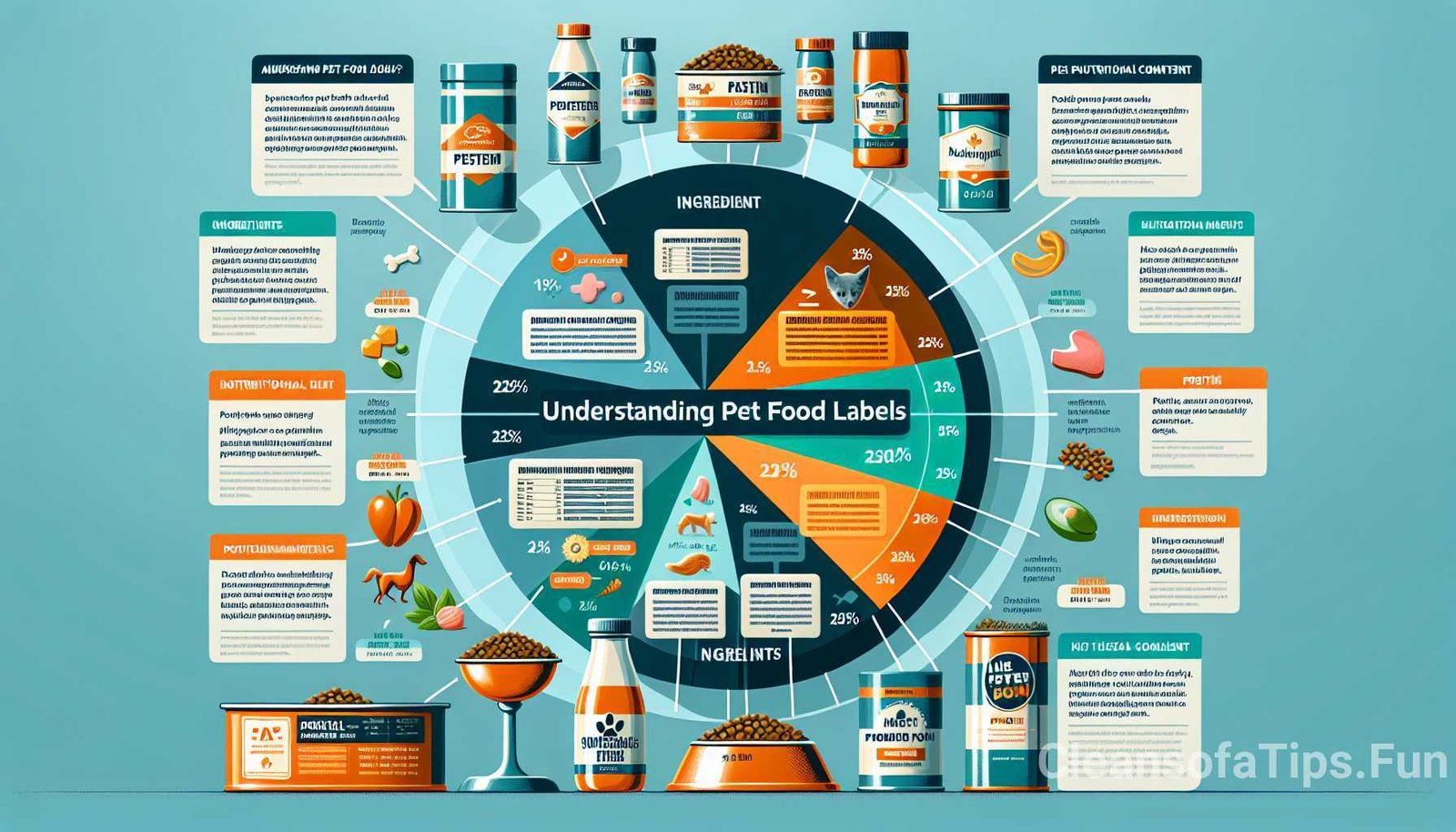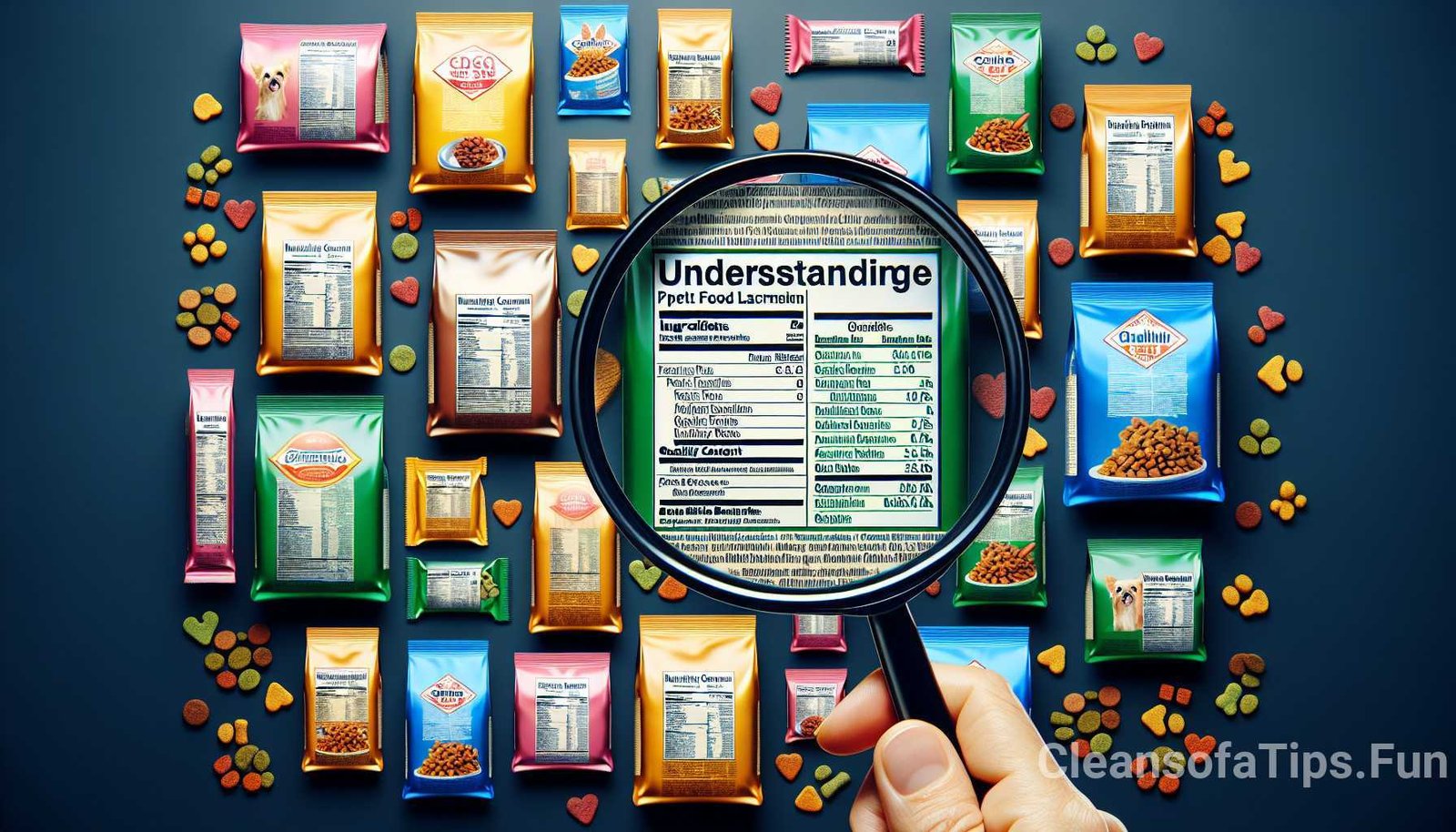Understanding Pet Food Labels: A Comprehensive Guide
Welcome to our comprehensive guide on understanding pet food labels. Choosing the right pet food for your beloved furry friend can be a daunting task, especially when faced with a sea of options at the pet food store. Pet food labels provide important information about the ingredients, nutritional content, and quality of the food, helping you make an informed decision. In this guide, we will walk you through the various aspects of pet food labels and provide you with the knowledge and tools you need to navigate the pet food aisle with confidence.
Why Are Pet Food Labels Important?
Pet food labels are not just fancy packaging – they serve a crucial role in helping pet owners make informed decisions about their pet’s nutrition. Proper nutrition is essential for the overall health and well-being of your pet, and the quality of the food they consume plays a significant role in their overall health. Understanding pet food labels allows you to assess the nutritional value, safety, and quality of the food you are considering for your pet.
By carefully reading and understanding pet food labels, you can ensure that your pet receives a balanced diet that meets their specific nutritional needs. This can help prevent nutrient deficiencies, promote healthy growth and development, and reduce the risk of certain health conditions.
What Information Should Pet Food Labels Include?
Pet food labels are required by law to provide specific information to consumers. Here are some key components that you should look for when reading pet food labels:
Product Name
The product name provides important information about the type of food you are considering for your pet. The name should accurately reflect the ingredients and composition of the food. For example, a product labeled “Salmon Dog Food” should contain a substantial amount of salmon as the primary ingredient.
However, it’s important to note that pet food labels can sometimes be misleading. Words like “beef,” “chicken,” or “lamb” in the product name may not necessarily mean that the food contains a significant amount of the named ingredient. Always refer to the ingredients list for more accurate information.
Ingredient List
The ingredient list provides a detailed breakdown of all the ingredients used in the food, with the most predominant ingredients listed first. It’s essential to carefully review this list, as it tells you exactly what your pet will be consuming. Look for high-quality, recognizable ingredients, such as meat, whole grains, and vegetables. Avoid foods that list generic ingredients like “meat by-products” or “animal digest,” as they may contain lower-quality ingredients.
Keep in mind that ingredients are listed by weight, so the first few ingredients should be the most abundant in the food. Look for a named protein source as the first ingredient, such as “chicken” or “beef,” rather than generic terms like “meat meal.”
Guaranteed Analysis
The guaranteed analysis provides information about the minimum or maximum percentage of key nutrients in the food, including crude protein, crude fat, crude fiber, and moisture. This allows you to compare different pet foods and determine if they meet your pet’s specific nutritional requirements. Pay attention to the protein and fat levels, as these are particularly important for your pet’s health.
Pet food labels may also include information about other nutrients, such as vitamins and minerals. However, these are not required by law, so their presence can indicate a higher quality food.
Feeding Instructions
Feeding instructions provide guidance on how much food you should give your pet based on their weight, age, and activity level. It’s important to follow these instructions carefully to ensure your pet receives the right amount of food. Overfeeding can lead to obesity, while underfeeding can result in nutrient deficiencies.
Remember that the feeding instructions on pet food labels are just a starting point. Individual pets may have different needs, so it’s important to monitor their weight and adjust the amount of food accordingly.

Additional Information
Some pet food labels may provide additional information, such as the manufacturer’s name and contact information, batch or lot number, and expiration date. This information can be useful in the event of a product recall or if you have questions or concerns about the food.
Understanding Pet Food Label Claims
Pet food labels often feature various claims and buzzwords that can be confusing for consumers. Knowing how to interpret these claims can help you make more informed decisions about the food you choose for your pet.
Complete and Balanced
A pet food labeled as “complete and balanced” means that it contains all the essential nutrients in the right proportion for your pet’s specific life stage, such as growing puppies or adult cats. These foods have undergone rigorous testing to ensure that they meet the nutritional standards set by organizations such as the Association of American Feed Control Officials (AAFCO). Look for pet foods that display the AAFCO statement of nutritional adequacy on the label.
Natural
The term “natural” on a pet food label generally implies that the food is made with minimally processed ingredients and does not contain artificial additives. However, it’s important to note that the term “natural” is not regulated by the FDA for pet foods, so its interpretation can vary among manufacturers.
Organic
Organic pet foods are made with ingredients that have been grown or raised without the use of synthetic fertilizers, pesticides, antibiotics, or hormones. To be labeled as “organic,” pet foods must meet specific criteria set by the USDA’s National Organic Program. Look for pet foods that display the USDA Organic seal on the label.
Grain-Free
The term “grain-free” refers to pet foods that do not contain grains such as wheat, corn, or soy. This can be beneficial for pets with specific dietary needs or food allergies. However, it’s important to note that not all grain-free foods are nutritionally balanced, so it’s essential to review the entire label to ensure that the food meets your pet’s specific nutritional requirements.
By-Products
By-products are the non-meat parts of an animal that are not typically consumed by humans, such as organ meats, bones, and connective tissue. While by-products are a natural and valuable source of nutrition for pets, their inclusion in a pet food can vary in quality. Look for specific by-products, such as “chicken liver” or “beef heart,” rather than generic terms like “meat by-products.”
Preservatives
Pet food labels may list preservatives used to extend the shelf life of the product. Some common preservatives used in pet foods include natural antioxidants like vitamin E and vitamin C, as well as chemical preservatives like BHA, BHT, and ethoxyquin. Natural preservatives are generally considered safer than chemical preservatives.
Common Myths About Pet Food Labels
There are several misconceptions surrounding pet food labels that can lead to confusion. Let’s debunk some of the most common myths:
Myth: Premium pet foods are always better

While premium pet foods tend to use higher-quality ingredients, it’s important to assess the nutritional composition and suitability for your pet’s specific needs, rather than relying solely on the price or marketing claims.
Myth: Higher protein content is always better
While protein is an essential nutrient for pets, the ideal protein content depends on the individual animal’s age, breed, and activity level. It’s important to consider the overall nutritional balance of the food, rather than focusing solely on the protein content.
Myth: All by-products are of low quality
By-products can be a valuable source of nutrition for pets, as they contain essential vitamins, minerals, and amino acids. Specific by-products, such as organ meats, are considered highly nutritious. However, it’s important to look for named by-products, rather than vague terms like “meat by-products.”
Myth: Grain-free diets are always better
While grain-free diets can be beneficial for pets with specific dietary needs or food allergies, it’s important to ensure that the food is still balanced and provides all the necessary nutrients. Some grain-free diets may be lacking in certain nutrients, so it’s crucial to read the entire label to determine nutritional adequacy.
Choosing the Right Pet Food for Your Pet
Now that you understand how to read and interpret pet food labels, here are some additional tips to help you choose the right pet food for your furry friend:
Consult Your Veterinarian
Your veterinarian is a valuable resource when it comes to choosing the right pet food for your pet. They can provide insight into your pet’s specific nutritional needs based on their age, breed, and health condition.
Consider Your Pet’s Unique Needs
Every pet is unique, and their nutritional requirements may vary. Consider factors such as age, activity level, and any underlying health conditions when selecting a pet food.
Read Reviews and Seek Recommendations
Reading reviews and seeking recommendations from other pet owners or trusted sources can help you narrow down your options. Keep in mind that individual preferences and experiences may vary, so it’s important to find the right fit for your pet.
Give It Time
When switching to a new pet food, introduce it gradually over a period of a few days to allow your pet’s digestive system to adjust. Monitor your pet’s overall health and well-being during the transition process.
In Conclusion
Understanding pet food labels is essential for making informed decisions about your pet’s nutrition. By carefully reviewing the product name, ingredient list, guaranteed analysis, feeding instructions, and any additional information, you can ensure that your pet receives a balanced and nutritious diet. Remember to consider your pet’s specific needs and consult with your veterinarian for personalized advice. Armed with this knowledge, you can confidently choose the right pet food that supports your pet’s overall health and well-being.
For more information on pet food labels, you can visit Wikipedia’s page on pet food.



